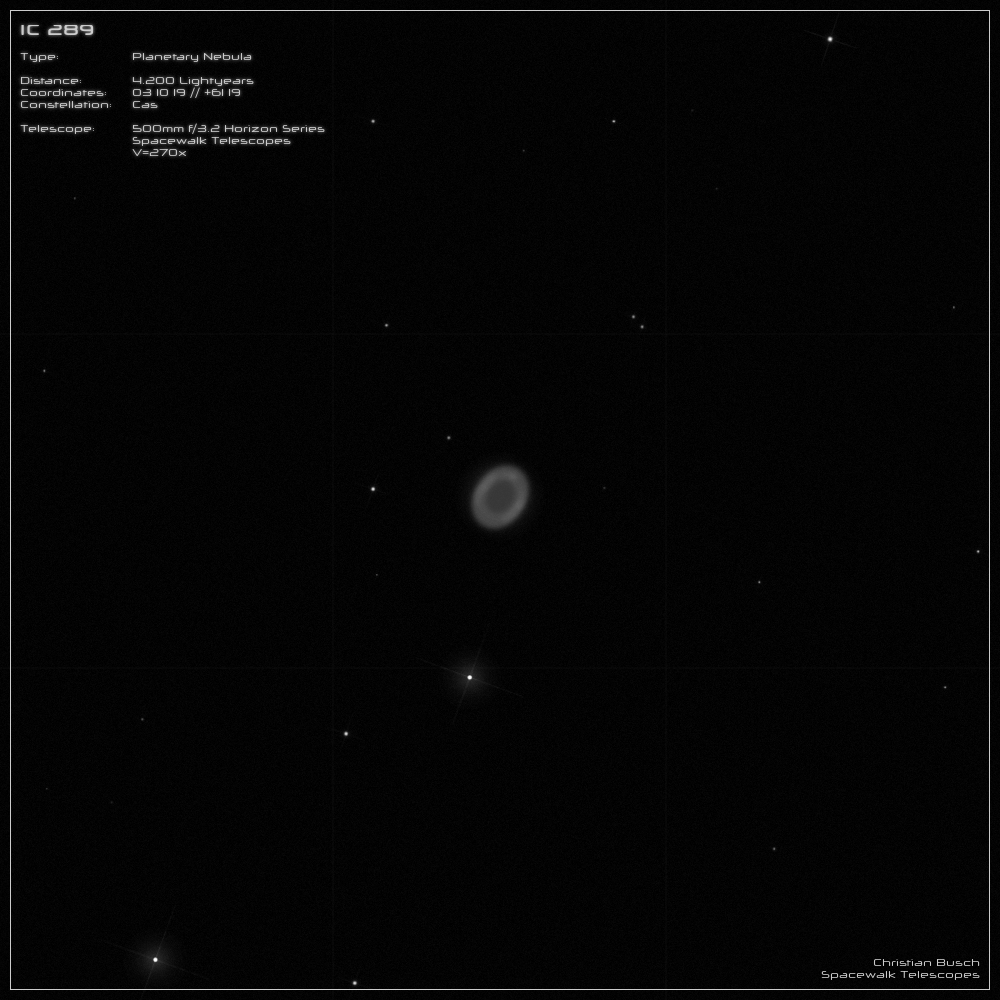IC 289 - Planetary Nebula
The planetary nebula IC 289 is located in the eastern part of the constellation Cassiopeia and has an apparent magnitude of 13.2mag.
It was discovered on September 2, 1888 by the US astronomer Lewis A. Swift.
The distance to the PN is given as 4,200 light-years, although other sources speak of 2,000 to 3,800 light-years. The problem in
determining the distance to a planetary nebula is often intergalactic dust, which reddens and attenuates the light from objects behind
it, making distance measurements difficult.
The disk of IC 289 contains many different structures. For example, an outer and inner nebular ring, a circular halo, and darker
patches in the interior around the central star. These structures are thought to have been created by a 2-3 solar mass star that lost
much of its envelope to massive stellar winds during the first 1000 years of the planetary nebula phase.
The central star itself with a visual magnitude of 16mag is even fainter than the central star in the Ring Nebula and therefore only
visible with large telescopes.
----------------------------------------------------------------------------------------------------------------------------------------------
IC 289 appears quite bright in my 20" f/3 Dobson at a magnification of V=270x in combination with an UHC filter.
You can see an oval ring whose interior appears slightly darker. The ring itself seems to be a little brighter at the longer sides and has
a very faint knot in the northwestern part. In addition, the ring appears to be surrounded by a very faint, nearly circular halo. However,
the fine structures in the ring as well as the sighting of the halo are at the limit of visibility, as the sky was not quite optimal during
the time of observation.
I could not see the central star even in moments with calm air.

